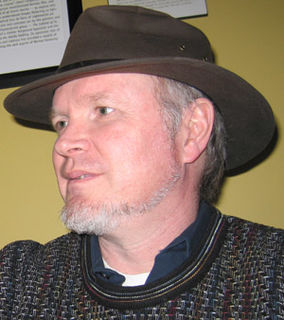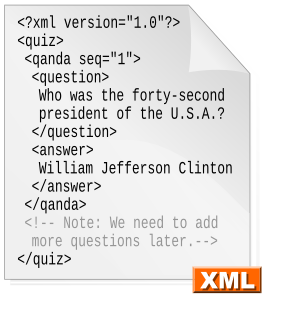The Semantic Web is an extension of the World Wide Web through standards by the World Wide Web Consortium (W3C). The standards promote common data formats and exchange protocols on the Web, most fundamentally the Resource Description Framework (RDF). According to the W3C, "The Semantic Web provides a common framework that allows data to be shared and reused across application, enterprise, and community boundaries". The Semantic Web is therefore regarded as an integrator across different content, information applications and systems.

RSS is a type of web feed which allows users and applications to access updates to websites in a standardized, computer-readable format. These feeds can, for example, allow a user to keep track of many different websites in a single news aggregator. The news aggregator will automatically check the RSS feed for new content, allowing the content to be automatically passed from website to website or from website to user. This passing of content is called web syndication. Websites usually use RSS feeds to publish frequently updated information, such as blog entries, news headlines, or episodes of audio and video series. RSS is also used to distribute podcasts. An RSS document includes full or summarized text, and metadata, like publishing date and author's name.
The Web Ontology Language (OWL) is a family of knowledge representation languages for authoring ontologies. Ontologies are a formal way to describe taxonomies and classification networks, essentially defining the structure of knowledge for various domains: the nouns representing classes of objects and the verbs representing relations between the objects. Ontologies resemble class hierarchies in object-oriented programming but there are several critical differences. Class hierarchies are meant to represent structures used in source code that evolve fairly slowly whereas ontologies are meant to represent information on the Internet and are expected to be evolving almost constantly. Similarly, ontologies are typically far more flexible as they are meant to represent information on the Internet coming from all sorts of heterogeneous data sources. Class hierarchies on the other hand are meant to be fairly static and rely on far less diverse and more structured sources of data such as corporate databases.

Web syndication is a form of syndication in which content is made available from one website to other sites. Most commonly, websites are made available to provide either summaries or full renditions of a website's recently added content. The term may also describe other kinds of content licensing for reuse.

The name Atom applies to a pair of related Web standards. The Atom Syndication Format is an XML language used for web feeds, while the Atom Publishing Protocol is a simple HTTP-based protocol for creating and updating web resources.
Web standards are the formal, non-proprietary standards and other technical specifications that define and describe aspects of the World Wide Web. In recent years, the term has been more frequently associated with the trend of endorsing a set of standardized best practices for building web sites, and a philosophy of web design and development that includes those methods.

On the World Wide Web, a web feed is a data format used for providing users with frequently updated content. Content distributors syndicate a web feed, thereby allowing users to subscribe a channel to it. Making a collection of web feeds accessible in one spot is known as aggregation, which is performed by a news aggregator. A web feed is also sometimes referred to as a syndicated feed.

FOAF is a machine-readable ontology describing persons, their activities and their relations to other people and objects. Anyone can use FOAF to describe themselves. FOAF allows groups of people to describe social networks without the need for a centralised database.
RDFa is a W3C Recommendation that adds a set of attribute-level extensions to HTML, XHTML and various XML-based document types for embedding rich metadata within Web documents. The RDF data-model mapping enables its use for embedding RDF subject-predicate-object expressions within XHTML documents. It also enables the extraction of RDF model triples by compliant user agents.
The RSS-DEV Working Group was the outgrowth of a fork in RSS format development. The private, non-commercial working group began with a dozen members in three countries, and was chaired by Rael Dornfest, researcher and developer of the Meerkat RSS-reader software.
Web syndication technologies were preceded by metadata standards such as the Meta Content Framework (MCF) and the Resource Description Framework (RDF), as well as by 'push' specifications such as Channel Definition Format (CDF). Early web syndication standards included Information and Content Exchange (ICE) and RSS. More recent specifications include Atom and GData.

DMOZ was a multilingual open-content directory of World Wide Web links. The site and community who maintained it were also known as the Open Directory Project (ODP). It was owned by AOL but constructed and maintained by a community of volunteer editors.
The Publishing Requirements for Industry Standard Metadata (PRISM) specification defines a set of XML metadata vocabularies for syndicating, aggregating, post-processing and multi-purposing content. PRISM provides a framework for the interchange and preservation of content and metadata, a collection of elements to describe that content, and a set of controlled vocabularies listing the values for those elements. PRISM can be XML, RDF/XML, or XMP and incorporates Dublin Core elements. PRISM can be thought of as a set of XML tags used to contain the metadata of articles and even tag article content.
XHTML+RDFa is an extended version of the XHTML markup language for supporting RDF through a collection of attributes and processing rules in the form of well-formed XML documents. XHTML+RDFa is one of the techniques used to develop Semantic Web content by embedding rich semantic markup. Version 1.1 of the language is a superset of XHTML 1.1, integrating the attributes according to RDFa Core 1.1. In other words, it is an RDFa support through XHTML Modularization.








